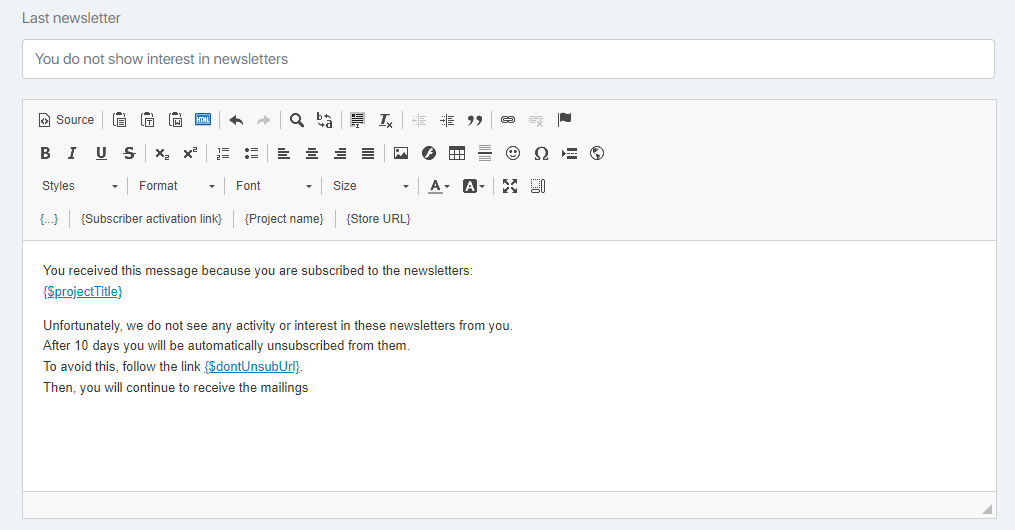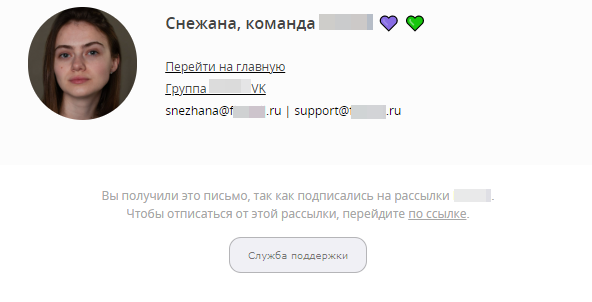Content
Base segmentation is an important and integral element of e-mail marketing and more. This is necessary in order to interact only with an active and interested segment of subscribers and completely weed out inactive ones, stopping interaction with them. If you do not do this and constantly use your entire database for each letter, then there will be unpleasant consequences:
- Low open rates. The result is low conversion.
- Deterioration of the rating of your domain by mail services. As a result – low deliverability (letters end up in “spam”).
- Uninterested subscribers clicked the “spam” button, which also worsened the rating of the sender’s contact.
- The load on the server increases, which slows down the sending of emails.
To avoid all this, you need to update your subscription base, and what tools to do this – we will tell in this article.
What if I don’t want to do all this? The customer journey…
We will tell a short story about one of our clients who grew his base of 500,000 subscribers.
This client did not hesitate to send letters to the entire database every day, as this, in his opinion, guaranteed a huge amount of sales, because as many as five hundred thousand recipients.
The client worked according to this model for a long time, but he did not take into account that mail services are also developing and keeping their statistics, and problems began in 2017.
Problems piled up one after another:
- Mail services blocked mailings completely (even they did not allow them to go to the “spam” folder).
- Mail services sent 80-90% of letters (according to information from the postmaster) to the spam folder, another 5% were rejected by the mail service, and only 5% of letters reached recipients.
- Sales dropped, revenue dipped. The newsletter, which used to bring 10000$, began to bring only 1000$.
- Hosters started sending us abuses (complaints) about the client, we had to take action.
We started working closely with this client to revive the sender’s domain, and it took us a whole year and more than 400 man hours, but we achieved the result.
What have we done? Now we will briefly describe our actions, and below in the text we will explain the work of all auxiliary tools.
- Digital signatures were configured for the client: SPF, DKIM, DMARC.
- The client was allocated a personal IP address for sending letters.
- An autogroup of active subscribers was created for the client, who open emails and interact with the content.
- The client was enabled for automatic cleaning of inactive subscribers.
- We helped the client divide the database into segments by interest so that subscribers receive only the content that interests them.
- Помогли грамотно переводить контакты, подписавшиеся на одну тему рассылки, на другие, из абсолютно другого сегмента.
After a year of work on cleaning and updating the database, the database was reduced by almost 10 times, while the conversion into a purchase increased due to division into interested segments, and the open rate of letters increased due to work only in the active audience. Thus, the client began to see objective statistics on his database and work with it.
We will tell you this: more does not mean better. We “behind the scenes” see examples where authors with 1000-2000 subscribers have a higher conversion rate than authors with 30,000 subscribers.
And now let’s talk in more detail about the tools that help segment the database.
Weeding out bots
It would seem, why do this, it only harms the statistics and there is no real understanding of how advertising channels work. Is this not enough? 🙂
How bad is a bot attack?
But, alas, there are pitfalls here. The problem is that 90% of bots use real mail services: mail.ru, gmail, yandex, etc. But at the same time, they use fake mail, like [email protected].
What happens if you send a letter to such an address? Gmail will see that you, as the author, from your domain, are sending an email to an address that does NOT exist in their system. Because of this, anti-spam filters begin to check your mailings more carefully and, if violations are detected, the sender’s rating decreases. Having fallen under the attack of bots, 10,000-20,000 such bots can be signed into your database, and each of them will receive an activation letter on behalf of your domain. The consequences are quite expected – blocking from the mail service or lowering the sender’s rating, which entails a direct hit in the “spam” folder.
How to avoid it?
Enable reCapcha for your subscription forms. This in 99% of cases protects against bots and they do not get into your database.
Just 10 minutes to set up. You can set it up by this instruction.
Automatic purge of inactive subscribers
JustClick has a feature that allows you to automatically filter out inactive subscribers who do not open your emails.
Using this tool, after a while, only active subscribers who open letters and are interested in mailing lists will remain in your database.
And if this is not done… we told above what happens if this is not done.
Setting up automatic cleaning of inactive subscribers is quite simple – one click, but before that, be sure to read this article in order to understand the logic of the tool. And do not be alarmed when the number of subscribers in the database decreases.
There is a variable {$unsubscribeUrl} in JustClick – this variable is converted into an unsubscribe link if inserted into the email content.
Subscribers rarely look at the email footer and may not notice the unsubscribe link, so they will simply click on the “Spam” button in the email, which will lower the sender’s rating.
But you can make a beautiful footer for your newsletters and add an unsubscribe button there. Yes, this button will be more visible, but an interested subscriber will not click on it. There is no need to be afraid that people will press this button. It’s better to unsubscribe than to click on the “spam” button. Remember that unsubscribing does not harm the mailing list, but clicking on the “spam” button does.
Here is an example of a minimalistic and beautiful footer with an unsubscribe link.
Connecting your own digital signatures
Submit a request to technical support to enable your own digital signatures.
This will not greatly affect the deliverability, but it will protect against illegitimate mailings from your domain and help you view email analytics in more detail.
Segmentation
We distribute subscribers into different segments: activity, interests, clicked on “spam”, etc.
Black list
Create a blacklist group and put there all subscribers who do not want to receive your emails. For example, there are customers who have bought a product but do not want to receive promotional emails – add them to the black list. Always use this group when sending emails so as not to disturb those who do not want to receive emails.
In the section “Campaigns” – “Broadcasts” there is an opportunity to unload those who click on the “spam” button in the letters. Upload these addresses and add them to the blacklist group.
Autogroups
Using autogroup create a customer segment – this is the hottest segment of any base.
Create a inactive group or several groups and use them in mailing restrictions so as not to disturb inactive subscribers.

If you combine this with an automatic cleanup script, it works very well: you do not disturb the subscriber who has stopped opening your emails, but 10 days before unsubscribing, he still receives an email with the following content.
This is a standard letter, but you can edit it the way you like.
Transferring subscribers to a segment by interests
Use the “Link to add / remove from the list” tool in your emails. If the subscriber clicks on the link, the system will add him to the group you specified.
Let’s say you have a school for young programmers and you study Python, C# and PHP. When sending a letter that will be of interest to your entire database, insert links into it that will segment them. We will show an example “on the forehead”, do not repeat after us – design letters more beautifully.

Each link has its own group. Thus, you will add an interested subscriber to another group that he is interested in. Thus, for example, someone who originally subscribed to the C# mailing list will be added to the PHP group. But the subscriber makes the choice himself by clicking on the link.
Conclusion
Using all these tools, you can weed out absolutely all inactive subscribers (auto-clearing inactive ones), select active audience segments by deleting inactive ones, and move subscribers into groups depending on their interests.
Competent segmentation is the key to the success of good and high-quality e-mail marketing. There is no need to take the number of contacts in the database, because it is better to have a few high-quality contacts than a lot of low-quality ones.


